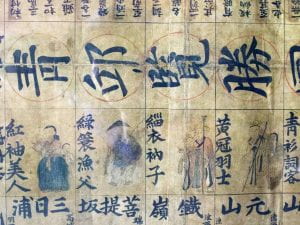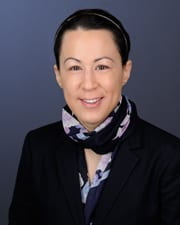GWIKS Lecture Series
“Paintings, Songs, and Board Games: Travels to Kŭmgangsan in Late Chosŏn Korea (1600-1900)”

Speaker: Maya Stiller, University of Kansas
Moderator: Jisoo M. Kim, GW Institute for Korean Studies
Thursday, March 7, 2019, 2:00 pm – 3:30 pm
Elliott School of International Affairs Room 505, the George Washington University
1957 E Street NW, Washington, DC 20052
◊ Description
Kŭmgangsan, also known as the Diamond Mountains, has a vibrant and rich history as one of the most famous mountains in Korea. In the late Chosŏn period, sophisticated knowledge about the mountain was a prerequisite to being considered cultured. Therefore, (aspiring) elite groups used a variety of virtual options such as travel accounts, folding screens, board games and songs to travel to the mountain and acquire knowledge about Kŭmgangsan. These forms of virtual travel have an organizing principle in common that reveals pre-modern understandings of the arrangement of places and their histories to optimize the memorization of important cultural sites. Combining the study of visual, literary, sonic, and haptic dimensions of Kŭmgangsan, this research complements previous art history scholarship which focused primarily on the mountain’s depiction in landscape paintings.
Speaker: Maya Stiller, University of Kansas

Maya Stiller is Assistant Professor of Korean Art and Visual Culture at the University of Kansas. From 2015 until 2018, she was a post-doctoral fellow at Harvard University’s Department of Art History and Architecture and a fellow at Harvard University’s Korea Institute. As an art historian with an interdisciplinary approach, Maya Stiller explores the visual cultures of Chosŏn period (1392-1910) Korea. Her article “The Politics of Commemoration: Patronage of Monk-General Shrines in Late Chosŏn Korea” was published in The Journal of Asian Studies in 2018. An article entitled “Slaves, Village Headmen, and Aristocrats: Patronage and Functions of Buddhist Sculpture Burials in Pre-Twentieth Century Korea” is scheduled for publication in Cahiers d’Extreme-Asie in 2019. Maya Stiller’s research projects have received support from the ACLS/Robert Ho Family Foundation, Harvard University’s Korea Institute and the Kyujanggak Institute for Korean Studies at Seoul National University.
Moderator: Jisoo M. Kim, GW Institute for Korean Studies

Jisoo M. Kim is Korea Foundation Associate Professor of History, International Affairs, and East Asian Languages and Literatures and Director of the Institute for Korean Studies at GW. She received her Ph.D. in Korean History from Columbia University. She is a specialist in gender and legal history of early modern Korea. She is the author of The Emotions of Justice: Gender, Status, and Legal Performance in Chosŏn Korea (University of Washington Press, 2015), which was awarded the 2017 James Palais Prize of the Association for Asian Studies. She is also the co-editor of The Great East Asian War and the Birth of the Korean Nation by JaHyun Kim Haboush (Columbia University Press, 2016).
This event is on the record and open to the media.


I have heard a lot about mount Kumgang in Korea. After establishing tourist region by North Korea its a bit easy to go there. May by I will be there in late 2019.